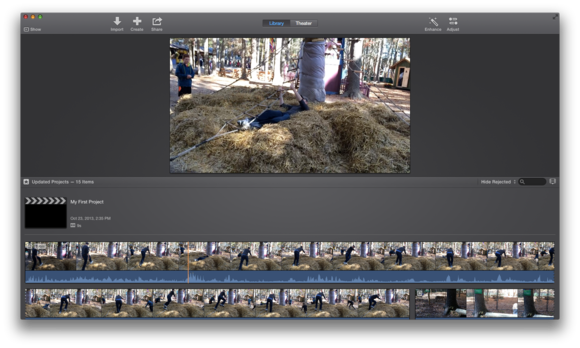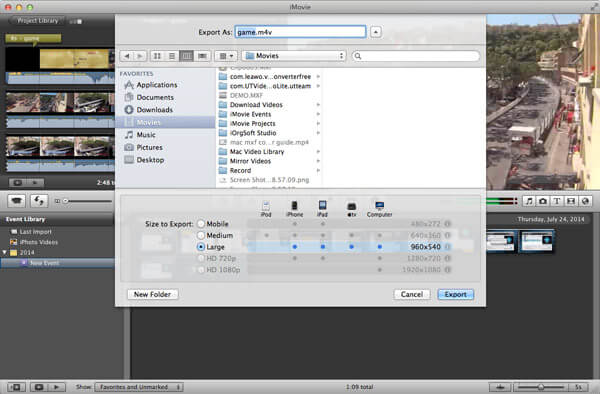- Select the iMovie Theater icon to export your iMovie to your Camera Roll. Check to make sure your iMovie appears in the Video folder of your Camera Roll. Step 2: Transfer your iMovie to your Windows computer. Option #1 - Wireless Download the Photo Transfer App to your iPad ($2.99).
- IMovie will launch Final Cut Pro, create a new Final Cut Pro Library called iMovie Library, create a Final Cut Pro Event (with the same name as the iMovie Event your movie came from), and finally, load your movie into the Event as a Final Cut Pro project. Click on the project to load it in to the timeline.
An iMovie library holds all the media and data used to make movies in iMovie. If your iMovie library is large and you want to free up storage space on your Mac, you can move your iMovie library to an external drive.
Before you move an iMovie library, it's a good idea to back up your Mac.
How to transfer iMovie project files to another computer, the actual editable file assembly insructions and original media so that the project can be revise.
Moving your library to an external hard drive doesn’t affect any iMovie Theater content you have moved to iCloud.

Prepare your drive
You can store your library on an external storage device such as a USB Thunderbolt drive formatted as APFS or Mac OS Extended (Journaled). Apple doesn’t recommend storing iMovie libraries on external storage devices like SD cards and USB flash drives, or drives shared on a network.
You can’t store your library on an external drive or other disk used for Time Machine backups.
Move a library to an external storage device
- Quit iMovie.
- Select your external drive in the Finder, then choose File > Get Info.
- If the information in Sharing & Permissions isn’t visible, click the triangle , then make sure the 'Ignore ownership on this volume' checkbox is selected. If it's not selected, click the lock icon to unlock it, enter an administrator name and password, and then select the checkbox.
- Click your desktop to make sure that you’re in the Finder, then choose Go > Home from the menu bar at the top of your screen.
- Open the Movies folder, then drag the file named iMovie Library to your external hard drive.
- When the library file is finished copying to your external drive, double-click the library file on the external drive to open it in iMovie. If an alert appears asking you to give iMovie access to a removable volume, click OK.
If you clicked Don't Allow, in the Finder choose Apple menu > System Preferences, click Security and Privacy, then click Privacy. Click Files and Folders in the sidebar, then select 'Removable Volumes' under iMovie. - Make sure the library you moved contains all your media, then drag the original file from your Movies folder on your Mac to the Trash.

If you disconnect the external drive
When your external drive is connected to your Mac, the library you moved to the external drive opens automatically in iMovie. If you disconnect the external drive containing the library, iMovie opens to a new, empty library created in the Movies folder on your Mac. iMovie automatically saves any projects you create and media you import in the new library.

Transfer Imovie Library To New
If you want to open the library you moved to an external drive, you can open it after you reconnect the external drive. You can then move clips, events, and projects between libraries.